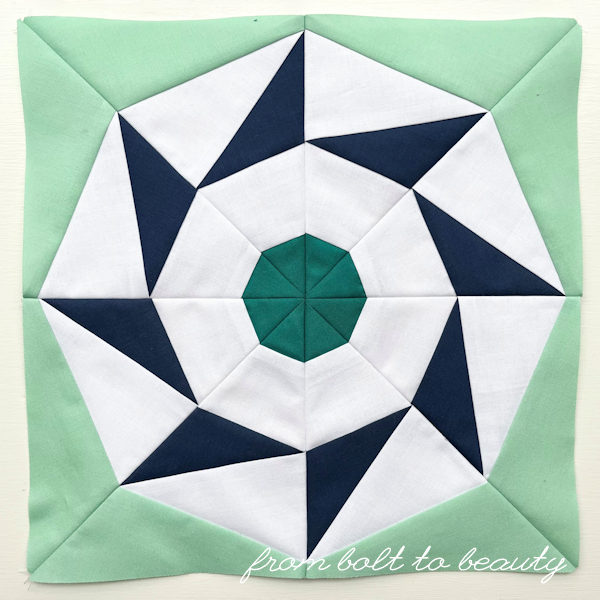Hello and happy new year! (And happy 200th Brag About Your Beauties Pageant!) Since many of us take the start of the calendar year as a way to reflect and recalibrate, I thought a post about spending mindfully on quilting supplies was appropriate.
Truth be told, I’m fiscally conservative in general—it’s just my personality. Since I started publishing patterns, however, my hobby has become self-sufficient. That doesn’t mean that I buy quilting supplies with abandon. Too much of a good thing can be overwhelming and undermine my creativity. (If that last point resonates with you, check out this illustration and this blog post from FeelGood Fibers.)
If you resolve to get smarter about your quilty purchases, too, consider these points ...
Fabric
1. Start with your stash.
When there’s a new project on the horizon, I shop my stash first. Too often I am tempted to order a new blender or buy a new background fabric only to discover that I already own a perfectly lovely substitute.
At times I’ve used a long-stashed cut of fabric as the inspiration for an entire project. (The best example of this is my Me-Wow! quilt; I started with the binding fabric and built the palette from there.) It may seem like a time-intensive way to use up yardage, but it can prove to be a fun exercise in creatively using what you’ve got.
2. Buy what you need for the project at hand.
Buying fabrics because you like them or because you’re afraid you won’t be able to find them in the future is a sure-fire way to amass a lot of fabric quickly. I try to buy just the material needed for the next project or two. (I know, it’s easier said than done.) After all, there will always be another beautiful, new fabric collection, and I can often find out-of-production lines on the secondary market after they disappear from quilt shops (and sometimes at better prices than they originally sold for).
To stick to this resolution, remove unnecessary temptations. That could mean unsubscribing to newsletters or steering clear of certain hashtags on Instagram (I, for one, have fallen into the rabbit hole called #TheGreatFabricDestash many times). You can always resubscribe in the future.
3. Sew with solids.
Do you know what’s less expensive than the latest and greatest fabric collection? Solids. I find I can save up to $4 or $5 per yard when I sew with solids instead of printed quilting cottons.
4. Buy smaller cuts.
Don’t buy a half-yard when a fat quarter will do the job. Say you want to sew a project with a scrappy low-volume background. Quarter yards (fat or skinny) will help you achieve that scrappy look without breaking the bank and without creating the scraps that half-yards would.
The challenge here is often finding a good source of quarter yards. I always start with my local quilt shop, because online fabric retailers usually have a minimum cutting size, but there are some online options for fat quarters. One of my favorites is Lark Cottons, which offers its entire stock as fats.
5. Buy local.
The benefit of buying in person is that I make smarter purchases, buying fabrics that are more likely to coordinate with the yardage I already have. Too often I find myself making an online purchase only to realize the fabrics aren’t quite right once I have them in hand. (And so the stash grows!)
6. Buy secondhand or trade with friends.
I’ve found great deals on older fabric lines on Instagram or FeelGood Fibers. I’ve also arranged a trade with friends. One quilty friend gave me unbridled access to her bin of 2.5-inch scraps, and I left her with a cut of fabric from my stash that I knew she would use faster than I could. It was a win-win!
7. Sell what you don’t use.
I’ve had good success selling fabric—including bundles, yardage, and scraps—on both Instagram and FeelGood Fibers. (Read my advice about listing on FeelGood Fibers here.) I use Instagram when I know something will sell quickly. FeelGood Fibers, on the other hand, is great because listings are searchable.
Quilting
8. Quilt some of your own projects.
I had made a few dozen quilts before I started sending projects out for longarming services, so I’m adept at quilting my own projects with a walking foot. I’ve even ventured into free-motion quilting with good success. If quilting is new to you, start with small projects and grow from there.
I quilt all of the baby quilts I make and anything that would benefit from my expertise in straight-line quilting. Projects bigger than a 72-inch square by default go to a longarmer, as do more angular patterns that would benefit from swirly quilting designs.
9. Buy batting in bulk and use up the scraps.
I buy batting by the bolt. My top choice is the Warm Company’s Warm & White. I think it’s good value for my money, and the white (as opposed to, say, Warm & Natural) works well with my usual white or cream background fabrics.
I also save my scraps and use fusible webbing to cobble them together to make bigger, more usable pieces.
Notions
10. Avoid buying unnecessary notions.
I don’t invest in trendy notions. Anything that I’d use on a single project is not worth the cost.
Instead of buying specialty rulers, I make sure my tried-and-true square and rectangular ones are in good working order and replace them as needed. And instead of buying expensive paper for foundation paper piecing, I buy a ream of 8.5-inch by 11-inch newsprint. I buy inexpensive irons at Target and store WIPs on coat hangers, in plastic Ziploc bags, or in plastic bins (all of which I use over and over again).
I’m sure you have your own tricks to make smart purchases. Share your tips in the comments below!
Follow Me On ...
* * *
The pageant rules are simple:
- Post your finish in the linky tool. (No links to your own giveaway or linky, please!)
- Point your readers back here with a text link or use the button above.
- Visit and comment on other participants’ finishes.















